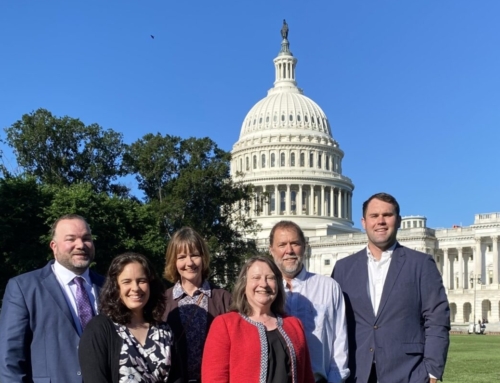This story was first published by Western Outdoor News in their Eastern Sierra Preview 2022.
Bishop, CA
The much-anticipated Eastern Sierra trout season opener is almost here! Before you grab those rods and reels and head out to your secret fishing holes, cast an eye to what is happening on the land and water affecting your favorite world-class fisheries.
More Than Planting Fish
Keeping streams full of fish takes more than just stocking. Outdoor recreation relies on clean, flowing water and undeveloped natural spaces, just as fish rely on them for survival. Healthy streams need permanent connections to fresh water sources. “All those critters that live in water, one of their climate resiliency strategies is to always be able to move and find cold, clean water,” according to CDFW Director Chuck Bonham in a recent California Natural Resource Agency talk with Secretary Crowfoot. When connections are interrupted, devastating changes are felt upstream and downstream, blocking access to food sources and spawning grounds.
In Southern California rivers, runs of tens of thousands of steelhead salmon have dropped to less than five hundred, largely due to disrupted habitat. Now, though, we have the “collective will, tools, and funding to actually make a difference” and reconnect habitat according to Dr. Sandra Jacobson, Director of CalTrout’s South Coast and Sierra Headwaters regions.

The Owens River provides crucial habitat for land and water-based wildlife. Lend a hand in the Owens River Annual Cleanup on Saturday, April 23rd! Photo by Rick Kattelmann, ESLT Board Member.
Work Being Done
Concerned groups are working to keep Eastern Sierra habitats connected. With the support of a growing membership, Eastern Sierra Land Trust (ESLT) works with willing landowners and funders to place permanent conservation easements on private lands vital to wildlife habitat and watershed quality. The 22,000 acres ESLT has protected provide a natural buffer to nearby public lands where we camp, fish, and hike. These family farms and ranches remain forever undeveloped, wide-open landscapes where mule deer forage on bitterbrush and fish swim through miles of rivers and streams.
Connecting Eastern Sierra Habitats
Extreme weather, wildfire, and development play roles in shrinking vital habitats. Mule deer have narrow migration corridors pinched by development and highways, making access to winter food sources challenging. “Animals out in the desert that survive on
wetlands, their ability to move between habitats in the face of climate change is a core species adaptation strategy,” Director Bonham continues. “Protect the last best places, reconnect those places, and restore the landscape,” he advises.
Thankfully, ESLT works to protect the habitat of mule deer, an iconic species of the West, to the benefit of other species as well. “Our wildlife habitat is abundant and diverse, supporting fisheries, migrating deer herds, and important bird flyways. This majestic landscape is a harmony of many distinct lands needing us to care for it and protect it,” says Kay Ogden, ESLT’s Executive Director/CEO.
Other ways to connect fragmented habitats include wildlife crossings over and under busy roadways. These provide mule deer and other animals safer passage to water and food and when migrating between winter and summer ranges. Such a community project is in the works by a collaborative group of agencies and organizations including ESLT. The Mammoth Lakes 395 Wildlife Crossing project seeks to reduce wildlife and vehicle collisions on Highway 395 near the Mammoth Lakes Airport. Follow updates on the project.

Mule deer captured by wildlife cam after crossing Highway 395 in Mammoth Lakes. They have to cross the highway to reach ranges they’ve migrated to long before the highway existed.
A Wetland Without Water
If you’ve spent time in the Eastern Sierra, you are likely aware that water is a hot topic and has been for decades. LADWP owns much of the land and diverts water to Los Angeles. In 2018, 6,000 acres of wetlands and meadows were dewatered in the Long Valley and Little Round Valley regions of Mono County. Matt McClain, who serves on the Keep Long Valley Green Coalition and ESLT’s Advisory Council, noted “Invertebrate life is the base food chain for all our fish in the watershed. If that landscape dries out, cheatgrass and russian thistle, invasive plants prone to fire, move in. Then we have dusty conditions like at the Owens Dry Lake.” Keeping this waterway flowing is just as vital to recreation on the Upper Owens River as it is to wildlife, native plants, and sustainable cattle operations. Watch the newly released short film “Without Water” from the Keep Long Valley Green Coalition for far-reaching impacts of this ongoing dispute.
Lend a Hand on the Land
Keeping landscapes and waterways free of litter protects wildlife as well as improves our enjoyment of these special places. Join the many volunteers for the Owens River Annual Cleanup on Saturday, April 23rd hosted by fishing guide Chris Leonard, CalTrout, Trout Unlimited, California Waterfowl Association, ESLT, and LADWP. Also, watch for the Great Sierra River Cleanup later this summer.
So, when a squadron of white pelicans glide gracefully onto the sandbar next to your favorite fishing spot, soak up the uniqueness of this amazing place and cast an eye to the work being done to connect vital habitats for now and for future generations. It takes all of us to protect what makes the Eastern Sierra so special.
Happy Opener, anglers!






